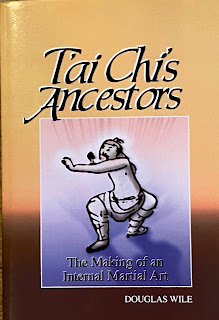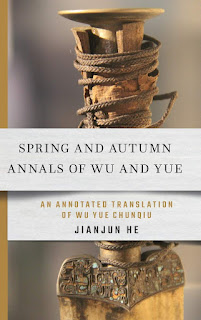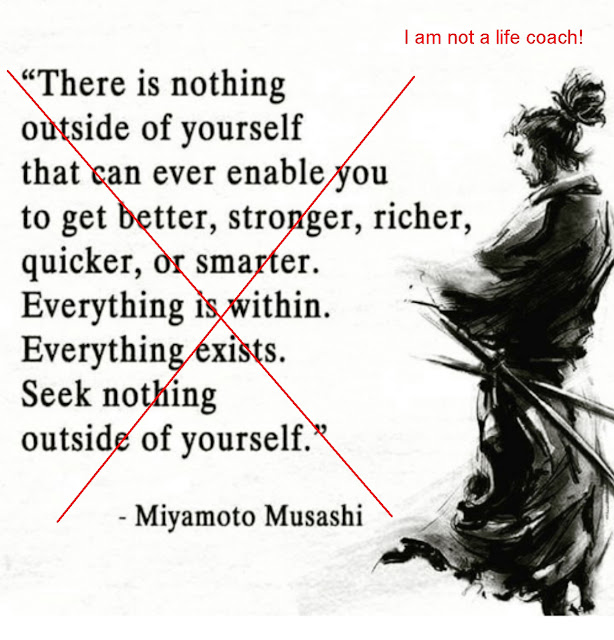Note on Translation and Meaning
Introduction
I (Richard) enjoy comparing translations of texts. For example, last year I published Comparing Translations of Itosu’s Ten Precepts of Karate and Did Miyamoto Musashi Say Something Like "There is nothing outside of yourself..."? Translation is key to this post as well.
Douglas Wile
Today I started reading T'ai Chi's Ancestors: The Making of an Internal Martial Art by Douglas Wile, 1999. I had just taken a look at his 1996 book Lost T'ai-chi Classics from the Late Ch'ing Dynasty. In the 1999 book he includes the following story on pages 3 and 4:
"Allusions to soft-style martial arts theory go back to the classical period. Chinese history and literature record two interesting encounters between martial artists and monarchs. The Wu-Yueh ch'un-ch’iu, Annals of the states of Wu and Yueh) compiled during the Han (206 BCE - 221 CE) relates a dialogue between the King of Yueh and a woman warrior named Yueh Nu. In response to the King’s plea for advice on how to strengthen his military, she reveals the secrets of her skill:
'The art of swordsmanship is extremely subtle and elusive; its principles are most secret and profound. The tao has its gate and door, its yin and yang. Open the gate and close the door; yin declines and yang rises.
When practicing the art of hand-to-hand combat, concentrate your spirit internally and give the impression of relaxation externally. You should look like a modest woman and strike like a ferocious tiger.
As you assume various postures, regulate your ch’i, moving always with the spirit. Your skill should be as obvious as the sun and as startling as a bolting hare.
Your opponent endeavors to pursue your form and chase your shadow, yet your image hovers between existence and non-existence. The breath moves in and out and should never be held.
Whether you close with the opponent vertically or horizontally, with or against the flow, never attack frontally. Mastery of this art allows one to match a hundred, and a hundred to match a thousand. If your Highness would like to test it, I can demonstrate for your edification.'" (emphasis added)
I was curious about the source of this story, as well as the discussion of swordsmanship and "hand-to-hand combat" in the same discussion.
Jianjun He
I discovered a new translation of the original text titled Spring and Autumn Annals of Wu and Yue: An Annotated Translation of Wu Yue Chunqiu by Jianjun He. I've reproduced all of section 9.11 to give context for the story which follows.
9.11. The king of Yue further asked Prime Minister Fan Li, saying, “I, the orphan, have a plan for revenge against Wu: we will sail in a boat if the battle occurs in the river; ride chariots if marching on land. However, the advantages of using chariots and boats are undermined by weapons and crossbows. Now you, sir, made plans for me, the orphan, and perhaps there are errors in your idea?” Fan Li answered, saying, “I, your subject, have heard that in ancient times sagely rulers were all familiar with war and the deployment of troops. However, as for arranging the lines, commanding the troops, and beating the drum for advance and retreat,85 victory and defeat are determined by people with expertise.86 Now I have heard that there is a maiden who was born in the Southern Grove in Yue and people in the state praise her skill. I wish for Your Majesty to invite her; you will see her skill right away.” The king of Yue therefore sent an emissary to invite her and asked her about the art of the sword and halberd.
The maiden was about to travel north to receive an audience from the king. On her way she ran into an old man who called himself Senior Yuan.87 He asked the maiden, “I have heard that you are good with a sword; I wish I could observe this.” The girl said, “I dare not hide it; I wish for you, old sir, to test me.” Senior Yuan thereupon pulled up a Linyu bamboo shoot.88 The top of the branch withered so that its tip broke and dropped on the ground.89 The girl then immediately picked up the tip.90 Senior Yuan held the branch and executed a strike as a feint at the maiden. The maiden then let him strike. After three attempts she then raised the stick to fence Senior Yuan. Senior Yuan immediately jumped up into a tree and transformed into a white monkey. The maiden thereupon bid farewell to him and went to see the king of Yue.91
The king of Yue asked the maiden, “What, indeed, is the way of swordsmanship?” The girl answered, “I was born in the deep woods and grew up in the uninhabited wild. I have no access to learning and I am not known by the lords.92 Privately I am fond of the art of fencing so I study it consistently. It is not that I have learned from someone, I just acquired the art all of a sudden.” The king of Yue said, “What is the way of fencing?”
The girl said, “Its way is subtle but simple, yet its thought is very deep and profound. It has both a correct path and crooked practices;93 it also contains the aspects of yin and yang. Open the right path and close the twisted way, then yin will decline and yang will rise up.94
In general, the principle of fighting with a weapon is filling your body with energy yet displaying a composed posture. You look like a gentle lady but fight like a terrifying tiger.
Observe your qi to ready your body accordingly, and advance together with your mind. Be as lofty as the sun but as swift as a jumping hare.
Chase the body and the shadow of your enemy as quickly as light. In the space of a breath, advance and retreat, no law or regulation can detain you.
Going left and right, back and forth, no one can hear you. Mastering this art, one can defeat one hundred men, and one hundred can defeat ten thousand. If Your Majesty wishes to test it, its effect will show immediately.”
The king of Yue was greatly delighted. He bestowed the maiden with a title right away and called her the “Maiden of Yue.” He thereupon ordered colonels of all units and elite warriors to learn from her and then teach the soldiers.95 At that time everyone praised the Maiden of Yue’s art of the sword." (emphasis added)
This version more consistently focuses on sword skills.
The Original Chinese
For readers who understand Chinese, here is the original text:
9.11. 越王又問相國范蠡曰: 「孤有報復之謀, 水戰則乘舟, 陸行則乘輿, 輿舟之利, 頓於兵弩。今子為寡人謀事, 莫不謬者乎? 」范蠡對曰: 「臣聞古之聖君, 莫不習戰用兵, 然行陣隊伍軍鼓之事, 吉凶決在其工。今聞越有處女, 出於南林, 國人稱善。願王請之, 立可見。 」越王乃使使聘之, 問以劍戟之術。
處女將北見於王, 道逢一翁, 自稱曰袁公。問於處女: 「吾聞子善劍, 願一見之。 」女曰: 「妾不敢有所隱, 惟公試之。 」於是袁公即拔箖箊竹, 竹枝上枯槁, 未折墮地, 女即捷末。袁公操其本而刺處女。處女應即入之, 三入, 因舉杖擊袁公。袁公則飛上樹, 變為白猿。遂別去, 見越王。
越王問曰: 「夫劍之道則如之何? 」女曰: 「妾生深林之中, 長於無人之野, 無道不習, 不達諸侯。竊好擊之道, 誦之不休。妾非受於人也, 而忽自有之。 」越王曰: 「其道如何? 」女曰: 「其道甚微而易, 其意甚幽而深。道有門戶, 亦有陰陽。開門閉戶, 陰衰陽興。凡手戰之道, 內實精神, 外示安儀, 見之似好婦, 奪之似懼虎, 布形候氣, 與神俱往, 杳之若日, 偏如滕兔, 追形逐影, 光若彿彷, 呼吸往來, 不及法禁, 縱橫逆順, 直復不聞。斯道者, 一人當百, 百人當萬。王欲試之, 其驗即見。 」越王大悅, 即加女號, 號曰「越女。 」乃命五校之隊長、高才習之, 以教軍士。當此之時皆稱越女之劍。
If anyone wants to see what Google Translate thinks, here it is.
Conclusion
It looks like 凡手戰之道 is what Mr Wiles translates as "the art of hand-to-hand combat" and Google translates as "the way of hand-to-hand warfare." I do not read Chinese but I recognize the 道 character from judo as "way."
My point with this post is to share my observation that there can be a decent amount of difference in translation. I am wondering about the applicability of this passage to unarmed combat when the lady in the story is an expert with the sword. Can anyone care to comment?
You may know about our Amazon Wish List. If you would like to help us get books to read and review from that list, then please consider supporting us via Buy Me a Coffee.
If you like this article, check out our Facebook page, Instagram account, Twitter feed, and Amazon Wish List. Be devoted!





Comments
Post a Comment